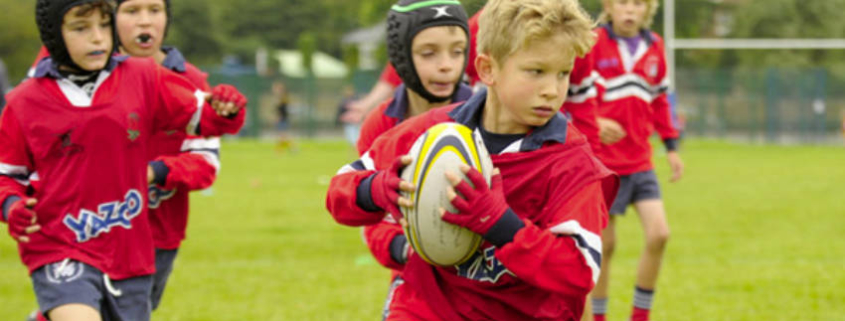Rugby Injury Prevention in Children
‘The promotion of initiatives that create a safe environment for children’s’ participation in rugby is paramount.’
Rugby, with its fast pace and exciting nature, serves as an important social and physical outlet for children. Exercise is essential for everyone, but especially for children. A well-designed exercise program enhances their physical and academic development.
Playing rugby may result in sports injuries because of abnormal exertions through joints, muscles etc as well as the increased demands placed on the body during training and matches. Injury can also be caused through contact with another player.When developing/growing children are vulnerable to unique injuries caused by a fall, a twist, or a turn. Because the growth plates at the ends of the long bones are softer than the main part of the bone, they are susceptible to injury, particularly during the growth spurt of adolescence.
While the list of injuries resulting from playing rugby is wide-ranging, there are plenty of measures that can be taken to lessen the risk of getting hurt and suffering long-term. The key to preventing injuries in any sport is identifying and addressing the risk factors associated with it. In rugby these risk factors include coaching, equipment, playing surface, and conditioning.
Injuries in rugby may have significant consequences, especially if untreated. It is important that coaches and parents alike not dismiss injuries as just part of the game. A lackadaisical approach delays recovery, prevents return to full function, and predisposes the child to reinjure. At worst the child may not be able to play the sport again and may carry long-term debilitating injuries into adulthood.
The team’s coach should recommend that an injured child receives medical attention from a qualified medical professional. In the meantime, injury symptoms can be minimized using RICE (Rest, Ice, Compression, Elevation). It is important not to ignore a child who complains of pain after injury.
Osteopathy can play an important role in rehabilitation following injury and in improving overall sports performance. Often, subtle differences in the way you move can place more stress on the joints of our body. The best way to minimise the chances of an injury taking place is to ensure your body is working optimally.
An osteopath will assess how your joints and muscles are working, and identify any areas that could potentially lead to an injury. The osteopath will then help to address the problem with treatment (myofascial release, massage, gentle joint release), postural and exercise advice; working with you to ensure your body is functioning as required. This assessment would serve as a preparticipation medical screening.
Consult an osteopath for further advice on injury prevention or if your child is already suffering
It is important to remember, as with any sports Injury, that prevention is better than cure!
View a list of common complains that Osteopathy can assist with
Discovery the benefits of Osteopathy
- What is Osteopathy?
- Adult health issues
- Babies and Children
- During and after pregnancy
- Common Complaints
- Testimonials
- Sports Injuries
- Genral Osteopathy FAQs
- The Science & Reasearch



